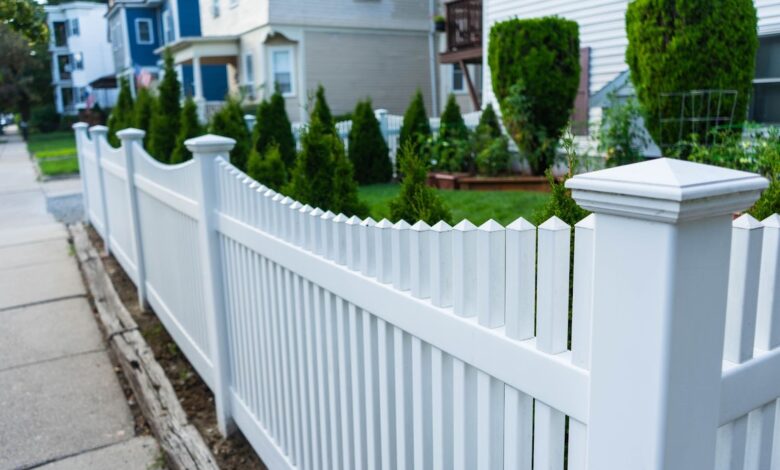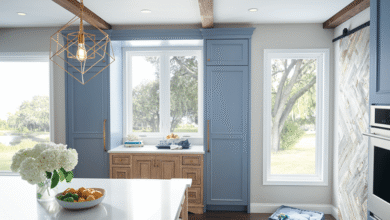The Ultimate Homeowner’s Guide to Planning a Fence Installation

A fence is one of the most practical and attractive upgrades you can add to your home. Whether you want more privacy, security, or curb appeal, a well-designed fence can make a big difference. But before you start digging post holes, there’s a lot to plan and prepare — especially in Washington State, where weather, terrain, and local regulations can affect the outcome.
This guide walks you through everything you need to know before starting your fence installation project, so you can avoid costly mistakes and build a fence that truly fits your home and lifestyle.
1. Start with a Clear Purpose
Every great project begins with a goal. Ask yourself: What do I want this fence to do?
Common reasons for installing a fence include:
- Privacy: A tall wood or vinyl fence can block unwanted views.
- Security: Metal or chain-link fencing helps keep intruders out.
- Safety: Keeps kids and pets safe in the yard.
- Curb appeal: Adds character and visual structure to your landscape.
- Noise or wind reduction: Solid fencing can help reduce outdoor distractions.
Knowing your main purpose will help you choose the right material, height, and style from the start.
2. Understand Local Regulations and Permits
In Washington State, many cities and counties have specific fencing codes. These can dictate how tall your fence can be, how far it must sit from property lines, and what materials are allowed in certain neighborhoods.
Before starting your residential fence installation, check:
- Local zoning laws at your city or county office
- Neighborhood HOA rules (if applicable)
- Utility line locations — always call 811 before you dig
Skipping this step could lead to fines or being forced to remove your new fence.
3. Choose the Right Fence Material
The Pacific Northwest is known for its wet, unpredictable weather. Choosing the right material will ensure your fence holds up against rain, wind, and occasional snow.
Here are some top choices for Washington homeowners:
- Cedar Wood: Naturally resistant to rot and insects. Beautiful and classic, but requires maintenance.
- Vinyl: Low-maintenance, weatherproof, and easy to clean — ideal for busy homeowners.
- Metal (Aluminum or Steel): Great for durability and security, with minimal upkeep.
- Chain Link: Affordable and functional, perfect for defining property lines or keeping pets safe.
- Composite Fencing: A mix of wood fibers and plastic for strength and longevity.
When planning your fence installation in Washington State, consider how much maintenance you’re willing to do each year and how the material complements your home’s exterior design.
4. Design with Function and Style in Mind
Your fence should match both your needs and your property’s layout. Think about how it fits into your yard’s design and everyday use.
- Height: For privacy, go taller (6–8 feet). For decorative or boundary fencing, shorter (3–4 feet) often works.
- Gates: Place gates strategically near walkways or driveways for easy access.
- Visibility: In front yards, semi-private fences allow light and sightlines to pass through.
- Aesthetics: Choose colors and textures that complement your home’s exterior.
You can even mix materials — like combining a wood frame with metal panels — for a modern, stylish look that stands out.
5. Consider the Slope and Soil Conditions
Washington’s landscapes are diverse — from coastal lowlands to hilly suburbs. Sloped yards and varying soil types can make installation tricky.
Tips for handling tricky terrain:
- Use stepped fencing for steep grades (panels that follow the slope).
- Choose treated posts for damp or clay-heavy soil to prevent rotting.
- Add gravel at the base of post holes to improve drainage.
Proper planning in this step ensures your fence stays stable and long-lasting — even in rainy conditions.
6. Prepare Your Yard Before Installation
Preparation makes a big difference in the smoothness of the project. Before your installer arrives or before you start building yourself:
- Clear vegetation and debris from the fence line.
- Mark exact property boundaries.
- Measure your total fence length and double-check gate placements.
- Remove obstacles like old posts, rocks, or tree roots.
Taking the time to prep your space reduces delays and helps you avoid surprises during the build.
7. Timing Your Installation
Timing your project can affect both cost and results. The best time for fence installation in Washington is typically spring or early summer — when the ground isn’t frozen, and rainfall is moderate.
However, fall installations can also work well, as contractors may have more availability and offer flexible scheduling. Just avoid heavy rain periods to prevent post shifting and muddy conditions.
8. Plan for Maintenance
No fence lasts forever — but with care, it can serve you for decades. Set up a simple maintenance routine:
- Inspect for rot, rust, or loose boards once a year.
- Repaint or reseal wooden fences every 2–3 years.
- Tighten hardware and oil hinges regularly.
- Clean vinyl or metal fences with mild soap and water.
Small efforts over time will keep your fence looking beautiful and performing well through Washington’s seasons.
9. Hire a Professional or Go DIY?
While DIY fence projects can be rewarding, they also come with challenges — especially with large yards or uneven terrain. Professional installers bring experience, tools, and knowledge of local regulations.
Hiring certified fence contractors ensures:
- Proper post alignment and spacing
- Secure installation on difficult soil
- High-quality materials and craftsmanship
- Compliance with local codes
If you’re short on time or want lasting results, hiring professionals for your fence installation project is usually worth it.
10. Budgeting and Cost Considerations
Fence costs vary based on materials, labor, and design. In Washington State, average installation prices can range from $25 to $60 per linear foot, depending on the material and property layout.
To budget effectively:
- Get multiple quotes from licensed installers.
- Factor in gates, hardware, and permits.
- Don’t forget long-term maintenance costs.
Remember — the cheapest fence isn’t always the best. A durable, well-built fence adds long-term value to your home.
Final Thoughts
Planning your fence installation carefully can save you time, money, and stress down the road. From choosing the right materials to understanding your property lines and hiring skilled professionals, each step contributes to a fence that enhances both your home’s beauty and function.
In a state as lush and rainy as Washington, a thoughtfully designed fence can provide privacy, protection, and peace of mind — all while standing strong through every season.
So whether you’re envisioning a cozy cedar fence or a sleek modern design, taking the time to plan your project right will ensure you enjoy your new outdoor space for years to come.




